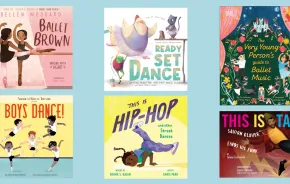
Any tween or teen even remotely interested in gaming is likely playing Fortnite, or begging parents to download the app. If your kid is one of them, here’s what you need to know.
What is this game and why is it so popular?
Fortnite is the leading entry in the wildly popular “battle royale” video game genre, a style of gaming that combines survival, scavenging, and strategy, often in tandem with other players. For context, it helps to understand the immense scope of the genre: Per gaming reviewer PCGamesN.com, nearly a third of all PC gamers play a battle royale-style game. Fortnite barely edges out the genre’s other leader, PlayerUnknown’s Battlegrounds.
With appealing animation and familiar themes, Fortnite attracts new players like a magnet: it boasts millions of players with around a million more joining each month. Fortnite’s last-man-standing plotline and sandbox-building elements make it a natural progression for kids raised in the era of Minecraft and Hunger Games.
As with any other craze, gamers joining the fray jump into a vast community of like-minded players. In fact, Fortnite’s social connectivity is part of its appeal: Fortnite Battle Royale drops up to 100 live players into a match together. Players can go solo or choose Duo or Squad mode to play alongside one to three teammates, either friends or randomly matched strangers.
The game is available on Xbox One, PlayStation 4, Windows, Mac, and iOS and Android mobile apps. Unlike PlayerUnknown’s Battlegrounds, Fortnite Battle Royale is free (though it does offer in-game purchases, or microtransactions).
Your kid is begging to play. What should you consider?
First, the pros: Research shows that video games can build spatial reasoning skills, and multiplayer games like this one might spark collaboration and teamwork. Your kid could even cash in with an esports scholarship, like the one an Ohio university recently set up for skilled Fortnite players.
But there are a few drawbacks to consider. Fortnite does involve violence and warfare, so it’s not recommended for players under 13. The game’s chat mode means players can interact with other gamers, including strangers, in real time. Some players also watch live streams of other players or celeb gamers on YouTube and Twitch, providing an inlet for unpredictable content and profanity. And with an element of luck that sparks continued play, Fortnite has an addictive appeal that concerns some parents.
How to keep your player from turning into a Fortnite zombie
Parents of young gamers can set limits to keep Fortnite play in check. In fact, the game provides a natural limit, since each “match” lasts just 20 minutes, providing a natural stopping point or a bargaining chip for parents (players could earn a certain number of matches for completing homework or chores).
Make sure you know which gamers your kids team up with, or who they’re following on Twitch or YouTube, and talk with kids about the risks of live streaming their own gameplay. Parents worried about the chat mode can simply turn it off in the game’s settings/audio menu. And, of course, playing with your child—even for just a match or two—is the best way to stay current on your gamer’s virtual victories.
Find more information on Fortnite at Common Sense Media.











